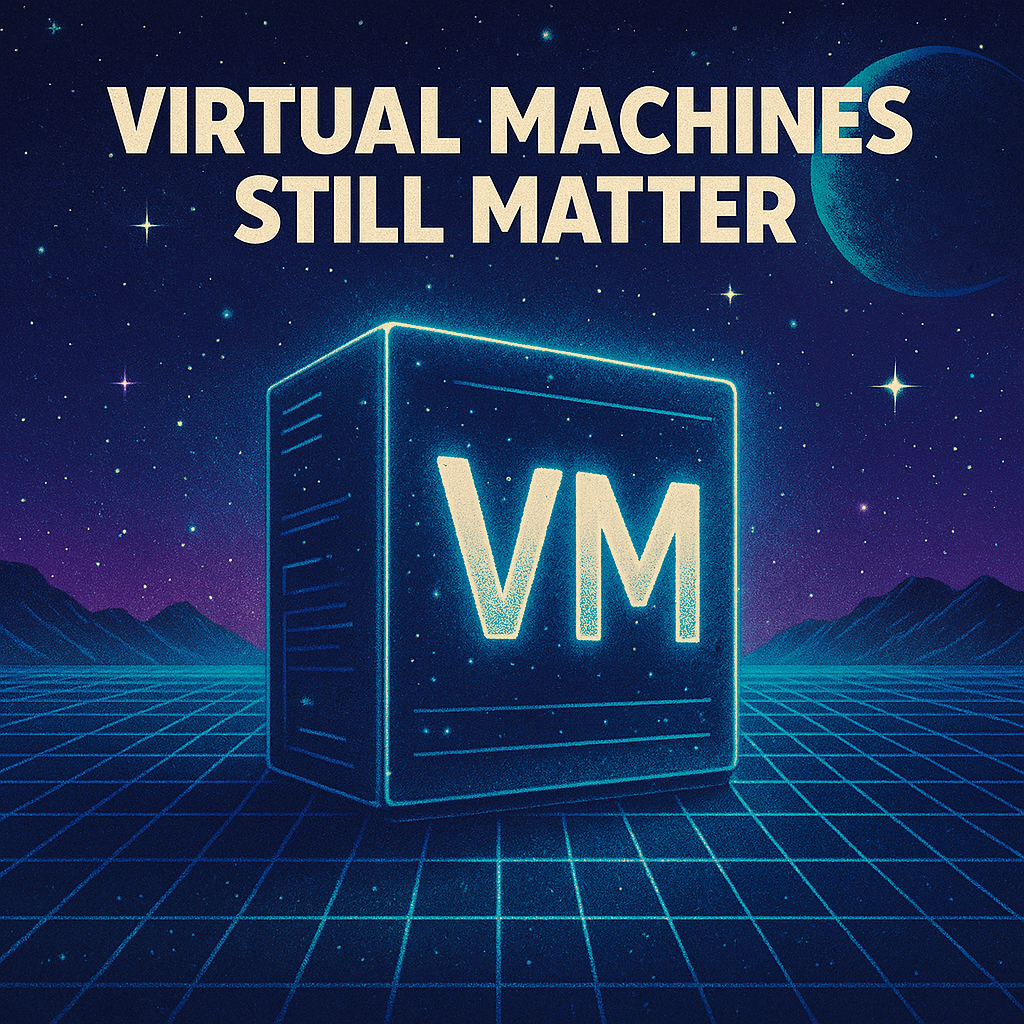Virtual Machines Still Matter — Even in a World Full of Containers and Cloud
With all the hype around containers, serverless, and Kubernetes, it’s easy to assume that virtual machines (VMs) are yesterday’s news. But talk to anyone managing enterprise infrastructure in the real world, and you’ll hear a different story.
VMs are still everywhere. And for good reason.
In fact, they remain one of the most reliable, flexible, and secure ways to isolate workloads, enforce policy boundaries, and run legacy applications — whether on-prem, in private clouds, or as part of hybrid deployments.
A Quick Reminder: What Is a VM?
A virtual machine is exactly what it sounds like — a software-defined computer running on top of a physical host. Thanks to a hypervisor (like VMware ESXi, KVM, Hyper-V, or Xen), multiple VMs can run on a single physical machine, each with its own OS, memory, CPU slices, and virtual hardware.
VMs don’t just “share” the server — they act like fully independent systems. That’s what makes them ideal for:
– Running multiple isolated services on one physical host
– Providing dev/test environments without extra hardware
– Hosting critical applications with predictable resource allocation
– Supporting disaster recovery and live migration
And when configured right, they offer strong isolation — far more than containers out of the box.
Why VMs Still Make Sense in 2025
Sure, containers are faster to spin up. But VMs are:
– Stable and well-understood — decades of operational knowledge and automation tools
– Supported everywhere — from bare-metal servers to public cloud IaaS (think EC2, Azure VMs, GCP Compute Engine)
– More secure by default — full kernel-level isolation, ideal for mixed-trust environments
– Versatile — legacy apps, full-stack Windows workloads, even nested hypervisors
Most importantly, VMs still power the cloud itself. The control plane, the hypervisors underneath, the orchestration layers — they all run on virtual machines. Even Kubernetes clusters often deploy inside VMs.
VMs and Containers: Not Either/Or
It’s not a battle — it’s a stack. Containers give you portability and speed, while VMs give you isolation, maturity, and flexibility. In most enterprise environments, you’ll use both — side by side or even together (hello, KubeVirt and OpenShift Virtualization).
Some workloads will always need the heavy-duty protection and configurability of a VM. Others will live comfortably in a pod or function-as-a-service platform. The trick is knowing when to use what.
Final Thought
Virtual machines aren’t going anywhere. They’ve just become part of the foundation, rather than the star attraction. And in a world where resilience, flexibility, and backward compatibility still matter — that foundation is as valuable as ever.

